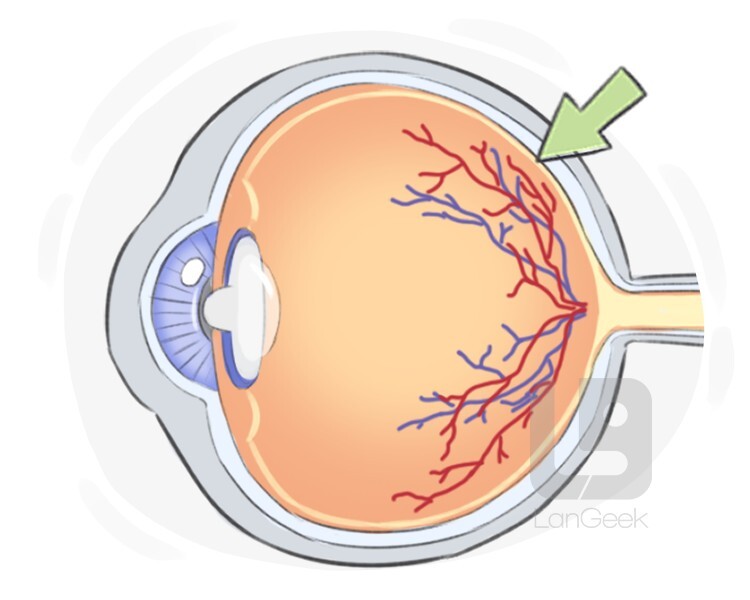Pesquisar
Selecione o idioma do dicionário
Retina
01
retina, membrana retiniana
(anatomy) the sensory membrane at the back of the eye that transmits light signals to the brain through optic nerves

Exemplos
The retina is the innermost layer of the eye that contains photoreceptor cells responsible for detecting light and initiating visual signals.
A retina é a camada mais interna do olho que contém células fotorreceptoras responsáveis por detectar a luz e iniciar os sinais visuais.
Light-sensitive cells in the retina, known as rods and cones, convert light energy into electrical signals that are transmitted to the brain via the optic nerve.
As células fotossensíveis na retina, conhecidas como bastonetes e cones, convertem a energia luminosa em sinais elétricos que são transmitidos ao cérebro através do nervo óptico.




























